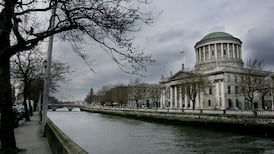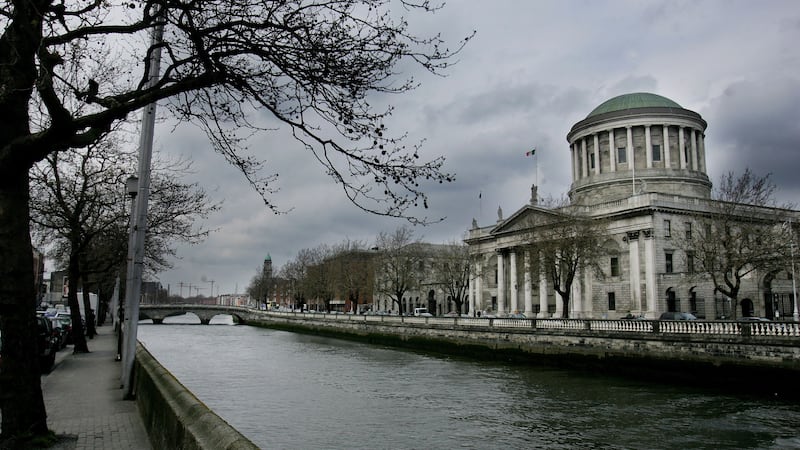After more than 100 days of sittings, 95 days of direct evidence and testimony from more than 373 witnesses, the coroner at the Stardust inquests began summarising evidence on Friday.
Dr Myra Cullinane told the 13-person jury at Dublin coroners court the evidence had been “vast” and “often distressing”.
“Yours is the most important role in these inquests and we now reach a point where your role crystallises,” she said.
Dr Cullinane said over the next “few days” she would take them through evidence heard at the inquests into the deaths of 48 people, aged 16-27, as a result of a fire at the north Dublin nightclub in the early hours of February 14th, 1981, set out the relevant law and explain the findings they would be required to make and entitled to make.
RM Block
“Notwithstanding the tragic circumstances of the 48 deaths of these inquests,” said Dr Cullinane, “it is expected you will approach your task in an objective manner, considering the facts and applying the law ... The evidence at these inquests has been vast, with 373 witnesses to fact, three forensic pathologists and three fire experts.”
She proceeded to outline the background to the opening of the Stardust in a former food processing factory in Artane in March 1978.
Outlining the role of Dublin corporation inspectors she noted the late Dermot King, senior building surveyor in the planning section at the time, “specifically stated” in 1981 that the “lodged and approved plans indicated the wall finishings were to be a Tyrolean plaster and there was no request for approval of the carpet tiles on the walls”.
The inquests heard more than 2,000 carpet tiles were central to the rapid spread of the blaze. Dr Cullinane took the jury through the evidence of those who sourced and supplied the tiles.
She took the jury through further evidence which identified doors had been locked and obstructed on numerous occasions in the months and years before the fire; concerns of staff about smelling smoke on the premises in the weeks before; and evidence of electrical issues at the premises.
Dr Cullinane said the late Patrick Butterly, director of Scotts Foods Ltd which owned the Stardust, said in 1981 his son Eamon Butterly had been in “sole charge” of the conversion of the former factory into the venue, that he himself had not had “any involvement” in the final finishings and was “not aware of” any of the fire safety
Turning to the evidence of former manager Eamon Butterly at the inquests in September and October, Dr Cullinane noted he said during their numerous inspections Dublin Corporation had made no objection to the carpet tiles.
“He agreed it is the obligation of the applicant [for planning permission] to comply with regulations and bylaws.
“He was taken through a number of the 10 conditions attached to the granting of planning approval and he accepted he didn’t consult the chief fire officer before commencement of the development which was one of the conditions.”
He said the corporation was aware of the tiles and “if they had an issue with them he would have removed them”, she said.
“He stated he had ordered metal panels to be affixed to toilet windows to stop people passing items into the nightclub ... Mr Butterly acknowledged that he was in breach of a number bylaws in place at the time including in relation to the locking of exits, failure to train staff and failure to hold fire drills,” Dr Cullinane said.
“He stated he never trained staff, provided fire safety training or put in place an evacuation procedure. He referred to himself as managing the managers and that he himself had no management training.
“He stated eight doormen would be sufficient for a disco of 800 patrons. He stated the policy of locking doors was Mr [Tom] Kennan’s initiative ... and he never saw any doors locked and if he knew doors were being locked when patrons were inside he would have told Mr Kennan to open them or there would be trouble.
“Further in his [1981] Garda statement, Mr Butterly stated exit doors 2, 3 and 4 would be unlocked at 10pm and the remaining exits were unlocked at 11.30pm. He stated this policy was forced on him by the fact a large number of people were getting in for free ‘due to the actions of their friends who were opening the doors from inside’.”
Dr Cullinane continues her summing-up next week.
- Listen to our Inside Politics Podcast for the latest analysis and chat
- Sign up for push alerts and have the best news, analysis and comment delivered directly to your phone
- Find The Irish Times on WhatsApp and stay up to date

















